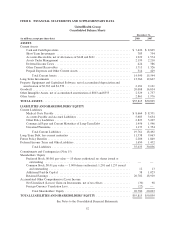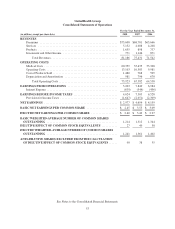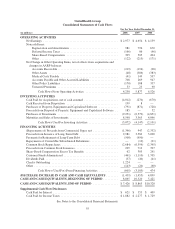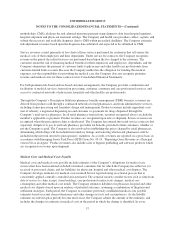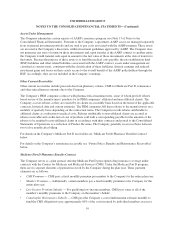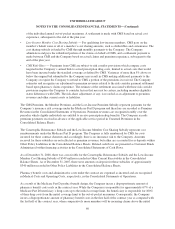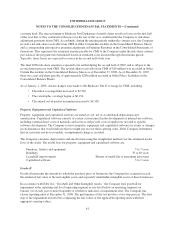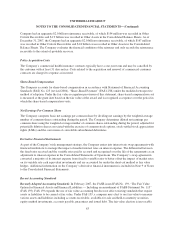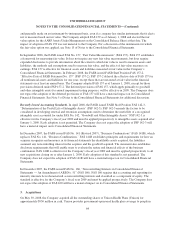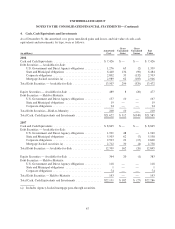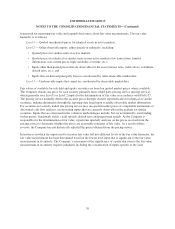United Healthcare 2008 Annual Report Download - page 72
Download and view the complete annual report
Please find page 72 of the 2008 United Healthcare annual report below. You can navigate through the pages in the report by either clicking on the pages listed below, or by using the keyword search tool below to find specific information within the annual report.UNITEDHEALTH GROUP
NOTES TO THE CONSOLIDATED FINANCIAL STATEMENTS—(Continued)
including goodwill. The Company generally determines the fair value of its reporting units utilizing a discounted
cash flow method, an income approach. If the carrying amount of a reporting unit exceeds the reporting unit’s
fair value, the Company performs the second step of the goodwill impairment test to determine the amount of
impairment loss. The second step of the goodwill impairment test involves comparing the implied fair value of
the affected reporting unit’s goodwill with the carrying value of that goodwill.
The income approach utilized by the Company requires the use of various estimates and assumptions, the most
significant of which include forecasted cash flows, weighted average cost of capital, terminal value, long-term
growth rates, and working capital requirements. The Company conducted its most recent impairment test on
January 1, 2009 and has determined there to be no impairment of the carrying values of goodwill as of
December 31, 2008.
Other Intangible Assets
Intangible assets with discrete useful lives are amortized on a straight-line basis over their estimated useful lives
unless another method can be reasonably determined. Intangible assets are reviewed for events or changes in
circumstances that would indicate an asset’s carrying value exceeds its estimated fair value in which case an
impairment charge would be recorded. The Company considers many factors, including estimated future utility
and cash flows associated with the assets, to make this decision. There were no material impairments at
December 31, 2008.
Other Policy Liabilities
Other policy liabilities include the RSF associated with the AARP program (see Note 13 of Notes to the
Consolidated Financial Statements), deposits under the Medicare Part D program (see “Medicare Part D
Pharmacy Benefits Contract” above), customer balances related to experience-rated insurance products and the
current portion of future policy benefits. Customer balances represent excess customer payments and deposit
accounts under experience-rated contracts. At the customer’s option, these balances may be refunded or used to
pay future premiums or claims under eligible contracts.
Income Taxes
Deferred income tax assets and liabilities are recognized for the differences between the financial and income tax
reporting bases of assets and liabilities based on enacted tax rates and laws. The deferred income tax provision or
benefit generally reflects the net change in deferred income tax assets and liabilities during the year, excluding
any deferred income tax assets and liabilities of acquired businesses. The current income tax provision reflects
the tax consequences of revenues and expenses currently taxable or deductible on various income tax returns for
the year reported.
Future Policy Benefits and Reinsurance Receivables
Future policy benefits represent account balances that accrue to the benefit of the policyholders, excluding
surrender charges, for universal life and investment annuity products and health policies sold to individuals for
which some of the premium received in the earlier years is intended to pay benefits to be incurred in future years.
As a result of the 2005 sale of the life and annuity business within the Company’s Golden Rule Financial
Corporation (Golden Rule) subsidiary under an indemnity reinsurance arrangement, the Company has maintained
a liability associated with the reinsured contracts, as it remains primarily liable to the policyholders, and has
recorded a corresponding reinsurance receivable due from the purchaser. As of December 31, 2008, the
62


